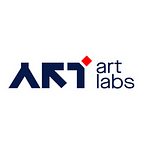In today’s “Inside the Lab” blog we would like to discuss proceduralism, its effect on our product, and how we see the future. Without further ado, let’s get started.
Proceduralism can be explained with well-known concepts from games. Let’s take you on a journey to better understand the concept. Imagine you are given the task of creating the whole terrain of a popular MMORPG game, you might start with a simple grass texture, then paint pathways with dirt textures, put some trees in different parts of the map and scatter some rocks and pebbles around the trees. While you can do this all manually, picking and placing different tree types based on your likes and dislikes, you can also let the computer do it automatically.
Proceduralism is analyzing and creating rulesets for specific tasks in many applications. The above example would be a great way to understand procedural workflows. If we analyze nature’s algorithms, we could easily create a procedural terrain generator based on the rules we found and introduced to the game engine. The engine could recognize different slopes of the terrain and decide whether to place trees or small bushes in a certain area, based on the slope calculation, also scattering the rocks around trees but only pebbles around bushes. This approach, analyzing and creating rulesets for specific tasks is proceduralism.
As artlabs, we are dealing with huge traffic of 3D assets in our VTO, and AR products. This amount of 3D data needs to meet the high standards in e-commerce while maintaining topologic restrictions such as polygon count, use of textures in a variety of shaders, and the overall visual quality of the 3D assets.
One of our strengths is its ability to handle all of these issues procedurally. We approach e-commerce standards with an engineering perspective to make sure stable outcomes are guaranteed. To be more specific, preparing VTO scenes requires intricate focus on the asset quality, but also the placement of the assets to the 2D image of each frame. We use our own procedural systems to ensure that the assets are aligned, scaled, and translated to fit the user’s feet realistically, and automatically, with no manual 3D artist touch-up in the pipeline.
Right: Procedurally prepared footwear asset, ensuring the snug fit of the digital sneaker to the image displayed.
Closing off, it is apparent that the gaming industry is a rich resource in shining light on modern e-commerce problems, regarding handling huge amounts of 3D data, manipulating and storing the data, etc. As web3 evolves even further, we can safely say that procedural processes will escalate the growth of 3D implementation in web3 products and services.
Author: Cem Özcan, Creative Director at artlabs
